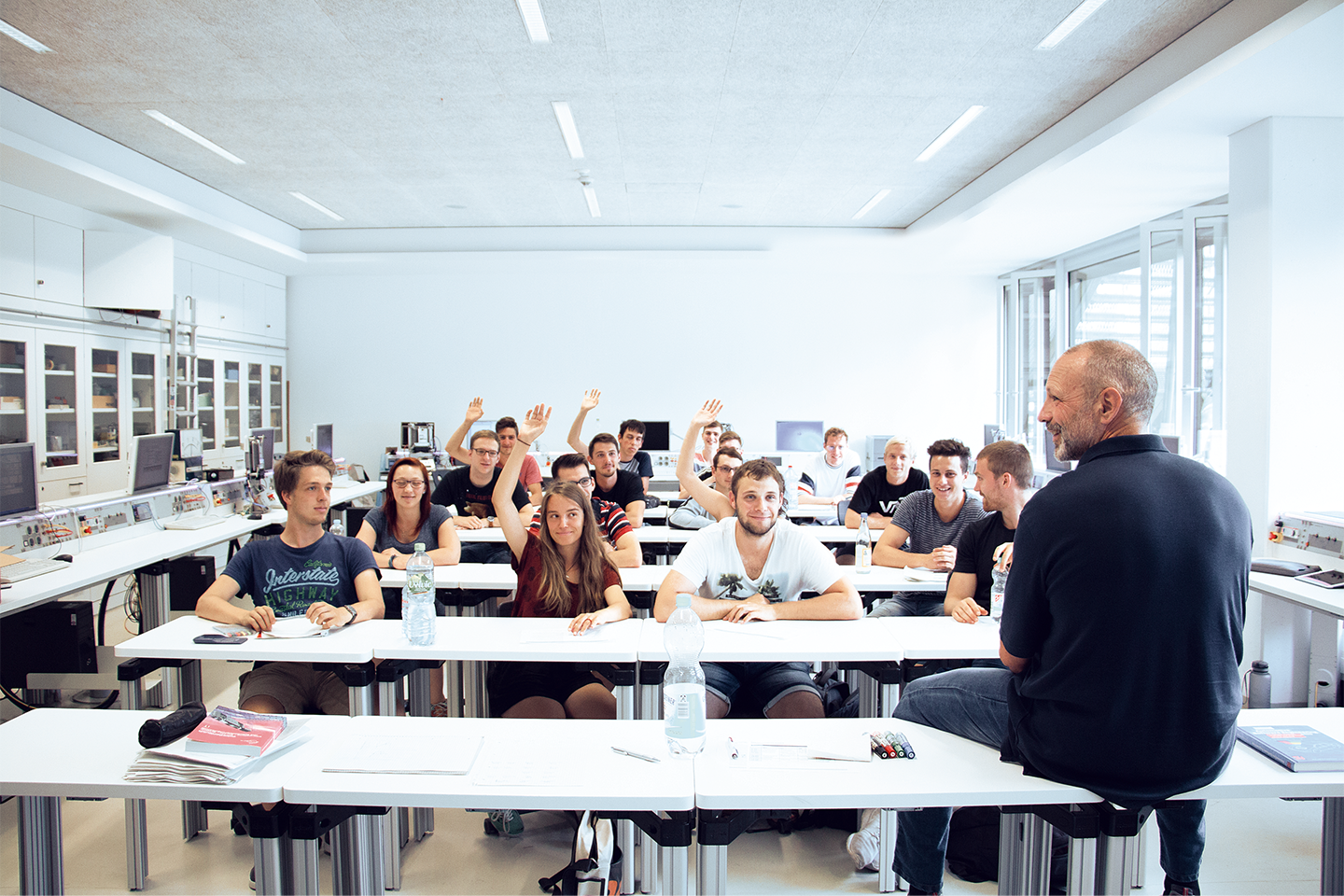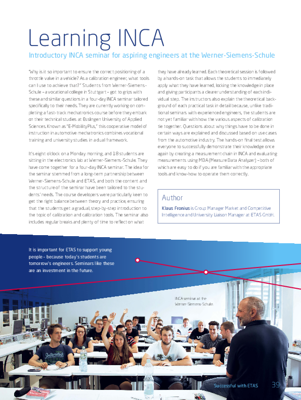Learning INCA
Introductory INCA seminar for aspiring engineers at the Werner-Siemens-Schule

“Why is it so important to ensure the correct positioning of a throttle valve in a vehicle? As a calibration engineer, what tools can I use to achieve that?” Students from Werner-Siemens-Schule – a vocational college in Stuttgart – got to grips with these and similar questions in a four-day INCA seminar tailored specifically to their needs. They are currently working on completing a fast-track mechatronics course before they embark on their technical studies at Esslingen University of Applied Sciences. Known as “E-MobilityPlus,” this cooperative model of instruction in automotive mechatronics combines vocational training and university studies in a dual framework.
It’s eight o’clock on a Monday morning, and 18 students are sitting in the electronics lab at Werner-Siemens-Schule. They have come together for a four-day INCA seminar. The idea for the seminar stemmed from a long-term partnership between Werner-Siemens-Schule and ETAS, and both the content and the structure of the seminar have been tailored to the students’ needs. The course developers were particularly keen to get the right balance between theory and practice, ensuring that the students get a gradual, step-by-step introduction to the topic of calibration and calibration tools. The seminar also includes regular breaks and plenty of time to reflect on what they have already learned. Each theoretical session is followed by a hands-on task that allows the students to immediately apply what they have learned, locking the knowledge in place and giving participants a clearer understanding of each individual step. The instructors also explain the theoretical background of each practical task in detail because, unlike traditional seminars with experienced engineers, the students are not yet familiar with how the various aspects of calibration tie together. Questions about why things have to be done in certain ways are explained and discussed based on use cases from the automotive industry. The hands-on final test allows everyone to successfully demonstrate their knowledge once again by creating a measurement chain in INCA and evaluating measurements using MDA (Measure Data Analyzer) – both of which are easy to do if you are familiar with the appropriate tools and know-how to operate them correctly.
Author
Klaus Fronius is Group Manager Market and Competitive Intelligence and University Liaison Manager at ETAS GmbH.
